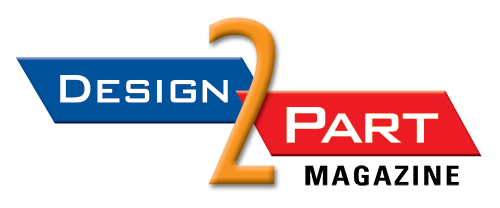Mark Shortt
Fifteen to 20 years ago, cost was often the decisive factor for OEMs when choosing whether to source their production domestically or overseas. Today, American manufacturers, like other companies across the globe, are increasingly abandoning the long-held business strategy of lowering costs through offshore manufacturing.
Eighty-one percent of chief executive officers and chief operating officers responding to a recent survey by the global management consultancy Bain & Company reported they were planning to bring supply chains closer to home or main markets, up from 63 percent in 2022. While only 36 percent reported they were making further investments in offshoring, nearly two-thirds of the respondents (64 percent) reported ongoing investment and execution by their companies in reshoring, near-shoring, and “split-shoring”—a practice that balances offshore production with manufacturing activity close to home, according to a November release from Bain and Company.
According to Bain and Company, the acceleration of the reshoring trend has “disrupted the previous business rationale for low-cost offshore manufacturing hubs, tilting the balance towards operations closer to home markets.” The company cites “heightened geopolitical turbulence and pressures for greater sustainability and reduced carbon footprints, alongside the post-pandemic goal to deliver greater resilience in supply chains,” as factors that are driving the trend.
Bain and Company Partner Hernan Saenz, global head of the firm’s Performance Improvement practice, said the company sees the acceleration of reshoring across key markets worldwide as “a crucial trend that demands CEOs’ attention.”
“The multiple disruptions companies have grappled with since the pandemic mean the question for company leaders is no longer whether to reinvent supply chains, but how to do that so their operations are made more cost-competitive, resilient, sustainable, and agile in responding to evolving markets and customer needs,” Saenz said in the release.
A report released in December by the World Economic Forum (WEF), in collaboration with global consultancy Kearney, also found reasons why low cost, by itself, is no longer the priority it once was in the siting and sourcing of manufacturing operations.
According to a release introducing the report, Beyond Cost: Country Readiness for Manufacturing and Supply Chains, regionalization of manufacturing is “becoming a key tactic to safeguard against global trade disruptions,” as more than 90 percent of manufacturing executives surveyed reported they are prioritizing regional supply chain strategies.
The release pointed out that although companies have learned to adapt to supply disruptions, from COVID-19 to the Suez Canal blockage, multiple geopolitical and environmental factors have combined to create an unsettled industrial landscape. Following a year of numerous elections across the globe and the resulting impact of potentially protectionist tariffs, regional manufacturing is seen as a protective measure.
“The findings from more than 300 global operations executives show that nearly two-thirds of manufacturers are adopting a ‘power-of-two’ strategy, having the majority of their spend sourced across two separate regions,” the release stated. “This shift moves beyond the traditional focus on best cost to include holistic factors, such as infrastructure, technology, skilled labor, and sustainability.”
According to the release, the shift from “best-cost” to “value-driven” investment strategies is also playing a key role in foreign direct investment (FDI) trends in manufacturing hubs. As a result, traditional low-cost regions are losing their appeal.
Kearney Partner Per Kristian Hong, the company’s Americas Strategic Operations and Performance Lead, neatly summarized one of the impacts of last year’s voting in elections across 50 nations, calling 2025 “a critical year for every company reliant on cross-border operations.”
“Plans to accelerate a sweeping range of policies, intended to reset global trade through tariffs and export controls, will require businesses to reassess their network manufacturing footprint beyond merely low-cost alone,” Hong said in the release. “A more complex and nuanced decision-making process is needed, one that considers flexibility and a country’s ability to deliver environmental change in line with global strategic priorities.”
On its website, the World Economic Forum stated, “Global value chains are undergoing a profound transformation in the wake of recent elections, escalating global conflicts, shifting sustainability priorities, and the rapid adoption of transformative technologies like AI. As manufacturers assess their footprints and network strategies, the trend of making location decisions based on cost is evolving into a more complex decision-making process, factoring a country’s readiness to provide an environment that aligns with strategic priorities.”
For American manufacturers, onshoring makes sense when factors like supply chain security, total cost of ownership, and efficiency are taken into account. It’s vitally important for the manufacturing of critical defense, medical, and semiconductor technologies. Although a shortage of skilled workers remains a significant challenge, it’s being met by strong efforts on the part of manufacturing companies to incorporate robotics and other forms of automation that can boost manufacturing efficiency, productivity, and quality.
As it stands today, exciting opportunities await companies looking to onshore, as U.S. manufacturers are leveraging hardware-software platforms, automation, 3D printing, and artificial intelligence (AI)—technologies that can help “future-proof” supply chains by making them more cost-effective and agile in responding to customers’ needs. It’s worth noting that a new crop of techno-industrial startups, like Anduril, Dirac, and Hadrian, are working to do just that.
Hadrian’s stated mission is to “transform the U.S. industrial base by building a series of highly automated precision component factories to enable space and defense manufacturers to get parts 10 times faster and halve the cost of making rockets, satellites, jets, and drones.” Process engineering, AI, machine learning (ML), and robotics are central to the company’s efforts to help scale the operations of companies within the U.S. industrial and manufacturing base.
